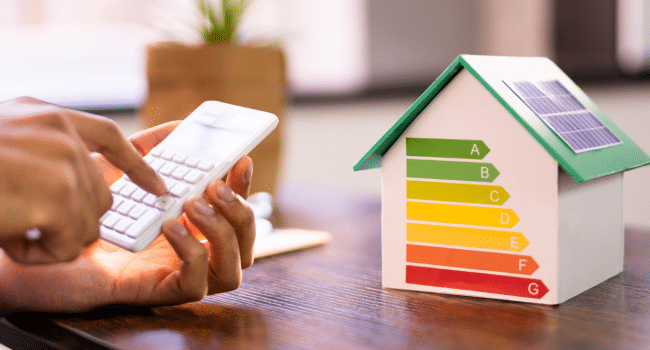Energy-efficient homes play a crucial role in reducing both costs for homeowners and the carbon footprint in the UK eventually increasing your property valuation. The UK government has made great efforts to promote the adoption of energy-efficient practices in the housing sector. Here are some key actions and strategies to reduce your costs and carbon footprint.
1. Standards for energy-efficient buildings: The UK government has introduced building codes such as the Sustainable Housing Code and the new Future Housing Code (expected 2025) to ensure that new homes are designed and built in an energy-efficient manner. These standards specify requirements for insulation, heating systems, lighting and other energy-related aspects.
2. Conversion of existing housing: A significant portion of the UK housing stock consists of older and less energy-efficient properties. Encouraging homeowners to upgrade their homes with insulation, energy-efficient windows and modern heating systems can make a big difference in energy usage and reduce costs over time.
3. Renewable energy sources: Encouraging the use of renewable energy sources such as solar panels and wind turbines in residential buildings can help homeowners generate electricity and reduce their dependence on fossil fuels.
4. Intelligent energy management: By installing smart metres and home energy management systems, homeowners can monitor and optimise energy use, resulting in more efficient energy use and lower utility bills.
5. Financial Incentives and Subsidies: The UK government has offered various financial incentives, grants and schemes to support energy-efficient innovation. Examples include green home promotions and renewable heat incentives that provide financial support for home improvements and renewable heating systems.
6. Education and awareness: Raising homeowners’ awareness of the benefits of energy efficiency and providing information about available support services and technologies can help promote wider adoption of energy-saving habits.
7. Zero Carbon Housing Initiative: The UK government has announced a target to make all new homes carbon-neutral by 2025, highlighting the importance of energy-efficient design and construction in new developments.
8. Community Projects: Community efforts to promote energy efficiency and renewable energy adoption can promote a sense of shared responsibility and facilitate the transition to energy-efficient housing.
9. Green Finance: Encouraging financial institutions to offer green financing options, such as low-interest loans for energy-efficient home renovations, could make it easier for homeowners to invest in energy-efficiency measures.
10. Green building materials: You can reduce the environmental impact of new homes by encouraging the use of sustainable and environmentally friendly building materials during construction. This includes materials with low energy efficiency, such as recycled and locally sourced materials, which help improve the energy efficiency of buildings.

11. Passive Design Principles: Pursuing a passive design strategy in a home can optimise natural light and ventilation and reduce the need for artificial lighting and air conditioning. Passive House is designed to maximise energy efficiency without the use of sophisticated mechanical systems.
12. Energy-Efficient Home Appliances: By encouraging the use of energy-efficient appliances in your home, Energy Star-qualified products can significantly reduce your electricity and utility bills.
13. Save Water: Water-saving measures such as low-flow devices and rainwater collection systems can reduce household water use, thereby reducing both the costs and carbon footprint associated with water use.
14. Community-based energy solutions: Supporting community-led energy projects, such as solar power sharing and community energy cooperatives, can promote community ownership and lead to more sustainable energy practices.
15 Energy Performance Certificate (EPC): Requiring a homeowner to obtain her EPC when selling or renting a property provides potential buyers or renters with valuable information about the property’s energy efficiency. This allows homeowners to make energy-efficient renovations.
16. Green Urbanism: Incorporating energy-efficient residential design into urban planning and zoning provisions ensures that the entire community is built with sustainability in mind, including public transportation, green spaces and mixed-use aspects.
17 State support for research and innovation: Continued investment in research and development of energy-efficient technologies and sustainable building practices could lead to new advances that make energy-efficient housing more accessible and affordable.
A holistic approach that includes government policies, financial incentives, public awareness and technological advances is critical to achieving significant and sustainable results in reducing costs and carbon footprint. By implementing these policies and initiatives, we can make significant strides in reducing both the environmental impact and the financial burden on the economy of our energy use.
Read More on KulFiy
Top 5 Space-Saving Ideas for Small Homes
